More shenanigans from an invisible man with a screenplay by Curtis Siodmak, also known as Curt and Kurt. In 1942 the more Anglo-Saxon name Curtis appeared in the credits. And this title is very much a wartime period piece.
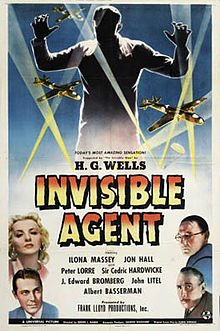 Lobby card.
Lobby card.
From get-go our hero, Jon Hall, is accosted in Nowheresville USA by thugs led by the ever so British Cedric Hardwicke, all dressed in mufti, and Hall knows instantly that they Nasty Germans. Cannot fool a Yank in 1942. Hardwicke knows invisibility when he sees it since he saw it in ‘The Return of the Invisible Man’ (1940) in which he led the bill. Since the invisible man punched his lights out in that film he became a Nasty and is out for celluloid revenge.
In this series the name of the invisibles has varied, Griffin, Radcliffe, Nerks. Is such confusion the inevitable result of invisibility, ahem, because maybe the lady did not know which was whose. That is the conclusion of the fraternity brothers.
The Nasties are Naziis. They want the formula for invisibility or else…. Hardwick is a bloodless reptile, but the scene belongs to the understated Peter Lorre as a malevolent Japanese along for the fun. Hall is a printer and in his printshop is a guillotine paper cutter. Shiver! Lorre thinks of ways to use it, on Hall.
The Nasties are overmatched, four thugs and a Nip against one Yank on his home court. He fights them off and they scurry away.
That Japanese is Mr Kentaro Moto who has answered the call to the flag and is now working for Japan and not the International Police. Yikes. He is perfectly sinister but he was useless in the fight. Strange how he had forgotten all that judo.
Hall is then asked ever so politely, not a waterboard in sight, to give his formula to the USA government, but he gets all pompous and refuses because it is too terrible a secret to reveal. In earlier films the serum was dangerous to the recipient because of its side effect (megalomania, aka Potomac Fever) but that is largely omitted here. The terror is in the capacity to be invisible and the evil that invisible evil men would wrought. As already seen the invisible woman was resistant to Potomac Fever.
Then the spinning newspapers report Pearl Harbor, and remembering Moto from the printshop disturbance, Hall goes to a Big Committee meeting in D.C. Who these men are is never explained, and some speak with European accents and some look more oriental than Moto ever did, amid the many Midwestern American accents at the table. Hall offers the formula, and speeches of gratitude are heard, but he has a caveat. Oh?
Only he can be inoculated, and he must do it himself, with the drug because…. Is it the side effects? Is it the secret which might fall into the wrong hands? Not clear to this viewer.
Now as a weapon in war, what good is an invisible man, naked, barefoot, and unarmed? Would invisibility have helped the Finns in the Winter War? This question is never pursued, we just segue to the secret agent, the spy, the invisible agent spy: bare of foot, naked of clothes, and without a weapon in sight.
It seems the Nasties are planning to invade the USA, and the question is when is Invasion Day. Kind of reverse of D-Day in Normandy. They will launch this attack from Nasty HQ in Berlin! Amazing logistics will be needed for that in 1942 This practical matter is later brushed off with a throw-away reference to a suicide bombing fleet leading the way (for the U-Boats laying a bridge across the Atlantic).
Hall is parachuted into Berlin to find the date. Yes, Berlin, well Potsdam a few klicks from Berlin,though conveniently the road signs are in miles. At headquarters the Nasties are Abbott and Costello.
Mind, while parachuting down, Hall strips off his flight gear and that is a marvellous effect. He is invisible when he lands and the Nasties run around crashing into each other. Hereafter the invisible man, while remaining invisible, draws a great deal of attention to himself. The fraternity brothers recognised a kindred spirit in this ghostly presence.
Since he had no training, it seems also that he has no sense. He all but tweaks the noses of Nasties, leaves a trail even Abbott and Costello could follow, and generally makes it known that there is an invisible agent at work.
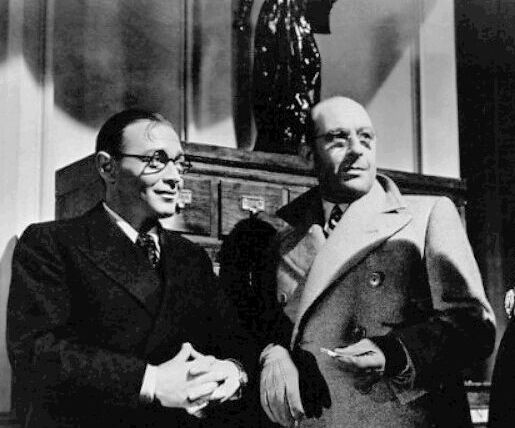 Moto and Hardwick get the word and converge on him, setting a trap, one even Homer Simpson would have detected, but not this ingenue who blunders in and when apprehended blames everyone else!
Moto and Hardwick get the word and converge on him, setting a trap, one even Homer Simpson would have detected, but not this ingenue who blunders in and when apprehended blames everyone else!
Not to worry, the Nasties even in Berlin are overmatched and Hall has little trouble in breaking jail, getting the exact date of the invasion, himself bombing Berlin for good measure, and flying off. Whew!
The special effects of invisibility are good. Here he is as a spectral presence which is far more eerie than complete invisibility though he is usually the latter.
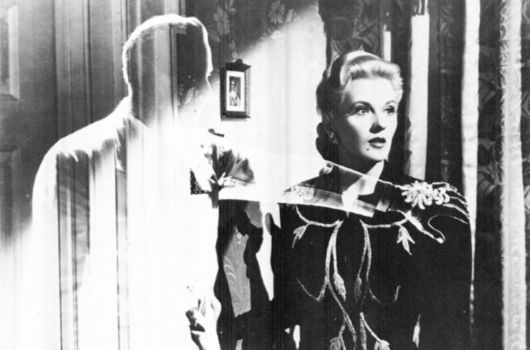
In addition to the parachute drop, our invisible hero takes a bath and as he soaps himself the lathered parts of his body appear, mainly his leg, an echo of the stocking scene in ‘The Invisible Woman’ (1940). Earlier there was a scene of his footprints in straw of barn, an echo of a scene in the original ‘The invisible Man’ (1933). Food, drink, telephones float in the air.
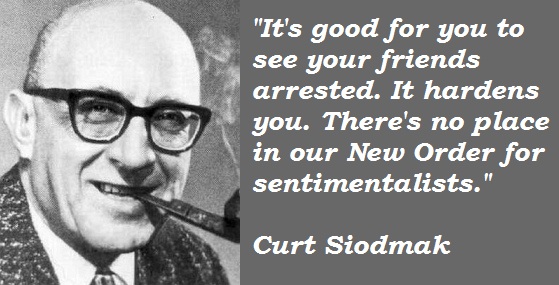
K(c)urt(is) Siodmak with a line from this movie
It was 1942 and Hall gives lectures time and again on the American way. If all of that was so important maybe he should been more responsible in concealing himself. The propaganda was dished by writer Siodmak, born a Polish Jew, and no doubt heartfelt since he had fled Hitter’s Germany a decade before finding his way to Hollywood, but it is also leaden and seems out of sync with the Abbott and Costello hijinks our hero gets up to when not at the podium.
Author: Michael W Jackson
‘Conquest of Space’ (1955)
George Pal produced this title and he always tried to get the science right, and left the screen play and direction to others in a division of labor, but, of course, he selected and hired the director and writer.
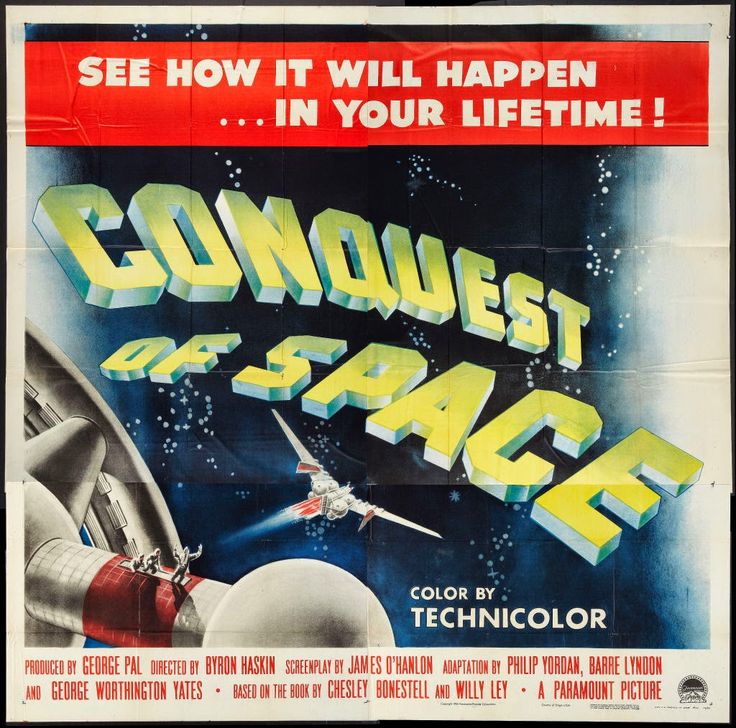
In this case he hired a director who specialised in special effects and knew nothing about directing a drama and a writer, well that is the problem, not one writer but several writers each of whom stitched in this and that and evidently no with a whole perspective. One output of the rumour mill has it that the studio executive in charge of production concluded during filming that the story lacked drama and insisted on adding the Oedipal element half-way through, while cutting the budget, a McKinsey manager avant le mot.
Pal’s groundbreaking ’Destination Moon’ (1950) had many critics who found it more like a boring documentary than a dramatic film. They said
it lacked humour
it lacked tension
it lacked sex appeal
it lacked humanity
it had too much science
it was too expository
it had too much vastness of space
and so on.
Pal went with the flow(s) and this is the result. All those elements ostensibly lacking in ‘Destination Moon’ were shoe-horned into the film. It is easy to picture the Happy Hungarian, as Pal was known, with a clipboard checking all these elements off the production schedule. The result is a mishmash of checklist items.
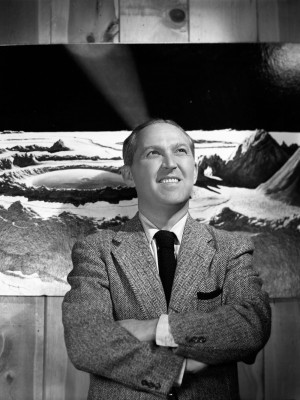
In a giant space station, the inevitable wheel because scientist at the time thought it was the way to the stars, a superior elite of the world’s best are preparing for the first moon landing. These individuals are the best of the best of the best of the best, a reference to the Men in Black for the cognoscenti. Each man is a volunteer, each man, for there are no women on the wheel, but yet there is still sex appeal. Intrigued? Read on.
That is the set-up and the ride is downhill from there. The writers reanimate the conventions of World War II submarine movies, where all the men were draftees, few were trained in more than turning a wrench, and the captain had sailed yachts. These superior spacemen complain about everything, want to go home, and are all Americans, almost. If this crew is the best Earth can do, better to stay at home.
Amid the crew are two foreigners, a Japanese and an Austrian. The Japanese gets one speech where he goes on about chopsticks as the miserable future for mankind, while the Austrian’s big scene is as hard to describe as it is to watch. Suffice it to say here it is pure kitsch.
The humour is supplied by an uneducated engineer who cracks jokes, I think, at intervals. Check. By the way this is a reprise for ‘Destination Moon’ where the radio operator did that.
The humanity must be all the whingeing by members of this superior elite who just want to go home. They are just regular guys, not super spacemen. Indeed.
The tension is maxed between commanding officer father and subordinate son, as if this is any way to run a railroad. Though there is a similar paternity in ‘Riders to the Stars’ (1954) from the typewriter keys of the ubiquitous Curt Siodmak.
The scientific exposition remains though, interspersed with lame jokes from the lame joker. Yes, these supermen in space still do not know the basics. All that training, all the preparation, all that work in building the space station wheel which was emphasised at the outset and gravity is still unknown.
‘The sex appeal?’ I hear the fraternity brothers asking. In another parody of World War II tropes the crew of the space wheel watches a movie with dancing girls and an uncredited Rosemary Clooney singing about love in the sand, an excerpt from ‘Here Come the Girls’ (1953). Sex appeal? Rosemary Clooney?
When that excerpt mercifully ends there are excruciating video messages for some crewmen. The Joker’s girlfriend drips 1950s celluloid sex on the screen, and then that Austrian, remember him, Ross Martin (who was born in Poland), who seems to combine German, Austrian, and Jew in a stereotype. His mother sounds like something from a Yiddish burlesque. Poor Ross. More humanity. Her private message to her son is screened in the recreation hall in front of the whole crew. Sensitive New Age management there.
The special effects are well done though many are borrowed from other films. But the vastness of space is there, and the movement from the wheel to the rocket and back is nicely done on a sled. And there is one memorable scene when the body of Ross Martin. who got in the way of an old reliable meteor, is consigned to the stars, though again the procedure mimics burial at sea.
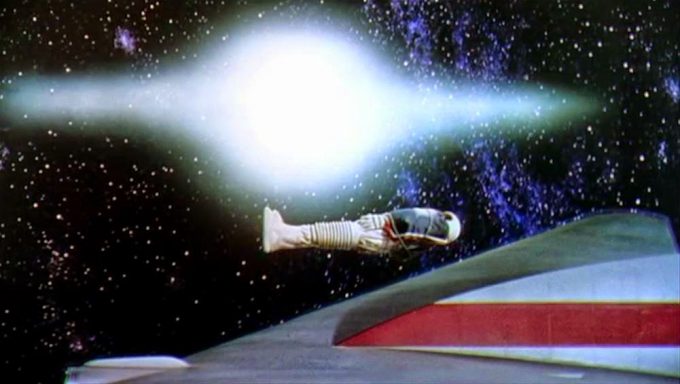
Who had to tell his mother? I wondered.
As Launch Hour nears, the impossibly handsome William Hopper, before Perry Mason took him on, appears to tell the elite team that their mission is not the Moon but MARS! Gasp! Groan! More whingeing follows from the supermen volunteers.
Walter Brooke as the general is top-billed, a journeyman television supporting actor. Who knows why Paramount with its stable of talents chose him is anyone’s guess. He seems flat and robotic, in what I suppose the director thought was military discipline. There is a subplot about space fever that comes from being in space too long or maybe from watching this film.
Since the mission has crept to Mars, the general asked for volunteers and some of the whiners volunteer so they can whinge some more, and a small crew sets off for the Red Planet. As they do the general gets religion from out of the black and blue of space. He goes bonkers and tries to scuttle the rocket ship and kill them all. Wow! Eric Fleming, before heading them up and moving them out on ‘Rawhide’ is his son and socks him. This sock saves their lives but infuriates one of the crewmen whose unexplained loyalty to the general is so great that seemingly he would rather be killed by him than see the general’s son sock him on the chops.
Even though the general has gone Tea Party feral, the son leaves him at large, while they land on the Red Planet, which looks like the red hills of Georgia. These space explorers show no interest in Mars and wait for the opportunity to leave. The general continues to gum up the works, until…. Remember Oedipus.
The Japanese plants a seed and it grows.
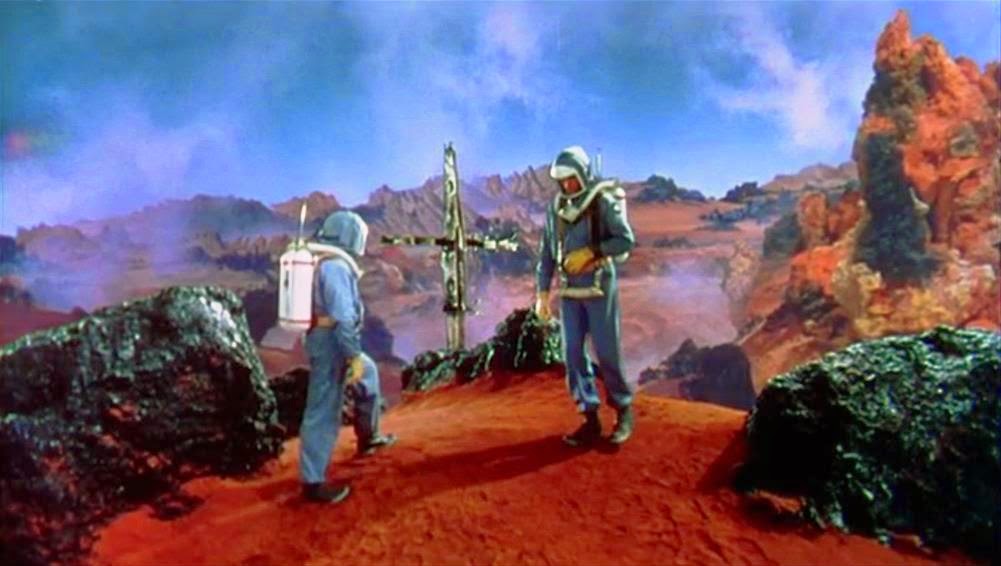
See, Georgia. Trite as it is on screen there is an important point which we would recognise today but which was missed both by the scriptwriters and the audience at the time, namely that we Earthlings are destroying our own planet and the mission to Mars is to find new resources, including food. It turns out the earlier speech about chopsticks had a point in its garbled nonsense.
They have to wait on Mars for the next launch window, though nothing about that is explained, though gravity had to be explained earlier, and thanks to the general their supplies are low. They make no effort to record observations or explore the red planet. However, it snows and with the water from that they can power the rocket back home! Well that is what it looks like.
But the snow is for Christmas and we have another derivation from WWII movies, with a schmaltzy Christmas on the front line. All the while the loyal crewman mutters threats to the son. It is all so stagey that no one is interested. least of all this observer.
Eric Fleming had a career on television which was cut short, when he drowned in an accident while filming on location.
This film concentrates on the psychological aspects of life in space, and not the technology, nor hairy and scary aliens. That is a welcome focus but the execution is so diluted that most viewers will miss the point. It is diluted mainly by all the tropes from World War II movies, the static direction, the wooden acting, and the mechanistic checklist. Moreover, there is little interest shown in space and exploration by this crew who just want to go home.
One famous scene is the dining hall. Yes, there is a dining hall per all those World War II movies, but in this hall there is no food, but only pills. Yet there is still a vast hall with cafeteria tables and the whole crew assembled for the service of pills. Another pointless trope that undermines the awe and mystery of space travel.
‘Nemesis’ (2014) by Jon Martin
A superb novel that traces the early life and career of the Spartan Gylippus of the Fifth Century BC. He was a major figure in the Peloponnesian War and the spine of the novel is derived from Thucydides’s ‘History’ of that war.
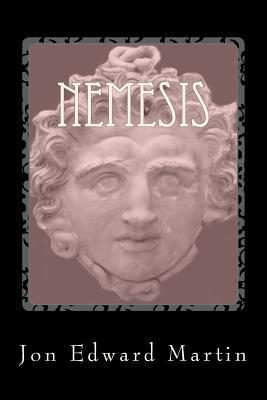
There is much insight into the inner workings of Sparta. The author knows the detail well but wears the learning lightly, though making no concessions to readers by spelling everything out. The reader is left to figure it out when Greek terms are used or to refer to the glossary at the end.
The divisions in Sparta are well realised. There are personal and clan rivalries and also personal ambition. As one character says much later to Gylippus from the outside the Spartans appear as one man. Hardly. The author makes the Spartans all too human, at times vain, myopic, venal, ambitious, resentful. But those tensions are played out behind many curtains.
Athenians are no better and their fractious conflicts are largely played out in the open air.
The contrast to Gylippus is the Athenian Nikias, another giant from the pages of Thucydides. Nikias does all in his considerable power to avoid war, and rejects command twice when it is thrust on him, and yet he dies in the war on duty,
Readers of Thucydides will know that the crucible for both Gylippus and Nikias was the Athenian invasion of Sicily. The arc of the story begins with the Athenian reduction, pillage, and rape of Melos, where the cry ‘The Athenians are coming!’ anticipated the German cry ‘The Russians are coming!’ in 1945.
That was Athenian democracy at work. The opening scene of the Athenian slaughter of chained Melian prisoners and then forcing the surviving women to stack the bodies of their faheres, husbands, sons, and burn them are gruesome indeed. After that the rape begins, followed by a slave market. Two young girls escape, and though that was unlikely, as a plot device it takes them to Sicily for later events.
We went to Melos in 2007 as homage to this atrocity.
On a pretext Athens invaded Sicily to seize the island and its agricultural wealth now that the Persians have closed the Egyptian grain trade. The expedition was gigantic and command was divided and proved contradictory, aggressive in one instance, and passive in another. Nikias searched for a political solution to accommodate the appetite of the demos on the Pnyx in Athens, while the other generals wanted a battle in which to be a hero. There is no pretence at unity among the Athenians.
Melos had appealed to Sparta for help in deterring the Athenians, but Sparta did not act.
In Sicily the democratic city of Syracuse likewise appealed to Sparta, and Sparta sent one man, and that was enough. ‘Throughout time allies did not sent to Sparta for ships, or money, or soldiers, but for one man,’ said Plutarch.
The divisions within Syracuse are well realised, and full of the irony of reality. The staunch defenders of democratic Syracuse’s independence are the oligarchs, while the Syracusean democrats sell out to the invading Athenians at every opportunity. They do so not for ideological reasons but because they hate the oligarchs.
The Athenians expect a show of force will bring Syracuse to its collective knees, and are mildly surprised by the resistance, but they remain confident that Sparta will not act. Though Nikias is less confident about this than his associates. Indeed he is so very cautious that he does not want to risk a battle for the gods can be fickle and his army is a long way from home, so he set about winning local allies on the island, establishing a supply base and so on. Time passes with small skirmishes.
Then comes Gylippus. There is a marvellous scene where the Athenians are marching around the walls of Syracuse in a demonstration of shock and awe when they encounter in a field a battle-line of hoplites standing at rest. The raw Syracuseans do not stand easy. When they lined up for a battle earlier, they fidgeted, wavered, squirmed, twisted, turned, and all but ran long before the fighting started. Not so on this day. The line is firm.
The Athenian force is great and this opposing line is much less and it is near the end of the daylight. Yet these hoplites stand calm and relaxed with their shield turned side ways to the Athenians. The Athenians approach and then on command the hoplites turn the shields faces catching the last rays of the setting sun to the Athenians who then see the lambda on the shields for Laconia, or Sparta.
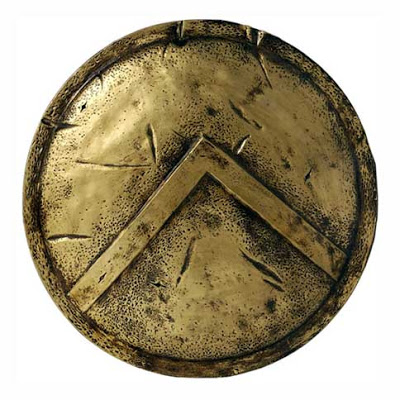 The shield is big enough for a man to hide behind it when the arrows fly. Together with body armour from toe to head the load on a hoplite was about thirty kilograms in battle.
The shield is big enough for a man to hide behind it when the arrows fly. Together with body armour from toe to head the load on a hoplite was about thirty kilograms in battle.
The Sparta have, this time, come, about a thousand of them face this Athenian contingent of perhaps five times that number. The frisson through the Athenian ranks is electric. Spartans! Darkness falls and no battle is joined but the news travels fast and by sunset everyone knows the Spartans have come.
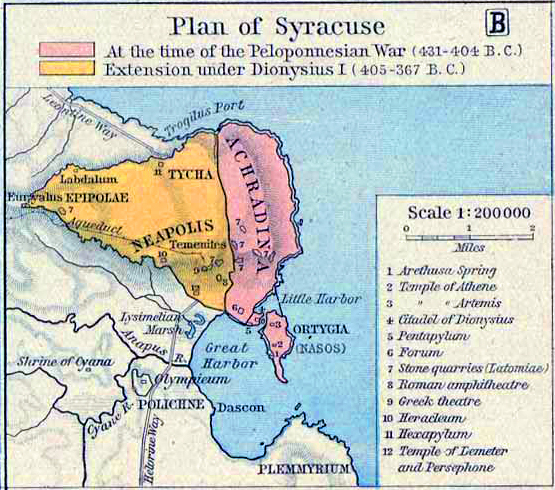
Game on. Over the next three years there is much cat-and-mouse between the protagonists, each undermined by rivals there and back home. Both Nikias and Gylippus have a two-front war, one military the other is a double political one with their respective home cities and local allies.
While Gylippus did not come quite alone, he came with only a token force compared to the forty thousand in the Athenian expedition. He relied on the defensive walls of the city and concentrated on cutting Athenians supply lines and stealing silver from them so they could pay the mercenaries that comprised the bulk of their forces.
Nikias was often infirm but he was not permitted by the demos to resign and he dared not leave on his own initiative for the demos had more than one unsuccessful general put to death, sometimes along with a few relatives to drive the point home. Likewise Gylippus, frustrated as he is by his reluctant allies in Syracuse, cannot go home without a victory.
The use Hermocrates makes of the two escapees from Melos is cleverly done by the writer. The exposition of the divisions within Syracuse are well set out though the Athenian sympathisers are largely cardboard. The author leaves aside the larger question that confuses modern readers, how could democratic Athens attack democratic Syracuse. The answer is, of course, that Athens by this time would eat anything. Even as this expedition was launched there was talk of Carthage, then but a legend.
The writer’s wit, insight, sympathy for the principal characters and the way he interprets the facts recorded by Thucydides is wonderful.
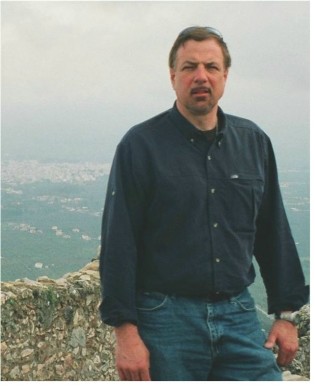 Jon Martin
Jon Martin
Clearly he has walked over all the ground he describes and done so with a sponge in his mind soaking it all up. I read his ‘Shades of Artemis’ (2004) about Brasidas some years ago and found it fine, too.
‘Destination Space’ (1959)
4.9 from a measly 46 opinionators
An earnest portrayal of the political, social, and technical challenges of space exploration two years after Sputnik. The Cold War backdrop is there in the frequently mentioned enemies.

In the foreground is a massive space station wheel serving as a base for Moon exploration and landing with a view of colonising for purposes not specified, but to get there before the enemy does. Here as in many space ship films the underlying cinematic conventions come from submarine movies.
The technical problems of space travel are many but mercifully the Geordie-Speak is kept to a minimum. The social problems are surfaced. There are jealousies among the space station crew. The long stints there undermine normal life on earth. But the major problem is politics, the securing of ever more appropriations from Congress. Nothing is cheap in space and Amazon Prime does not deliver there (or here).
A qualification is in order before continuing. This 51 minute film was the pilot for television series and one assumes the other issues would be played out in future episodes. In contrast ‘Project Moonbase’ (1953) started as a television pilot and was converted to a movie, with the result that it is neither an episode nor a movie.
The bulk of this episode is the aftermath of a meteor strike on the station. What would script writers of space Sy Fy do without meteors arriving on cue? Some of the reaction is technical, fix it, and some social, get over it. But the major result is political, going back to Congress for more money.
The big scenes are courtroom-like committee testimony which is well done but which is more Perry Mason than Flash Gordon. The opposition wants to scrap the money pit that the space station is and blast multi-stage rockets straight from Florida’s Cape Canaveral to the Moon to get there before The Enemy. That would be like launching the D-Day invasion of Normandy from New Jersey, though no one says that. But then the American invasion of North Africa in 1942 was launched from Virginia.
Perhaps the best scene involves a visiting scientist come to the station to have a look, being confronted with a leap of faith into space to move from the commuter rocket to the wheel. The look on The Chief’s face was superb as was the crocodile smile Townes gave him before pushing off the ramp into the void. It is The Chief from ‘Get Smart.’ This effect and many others were well done but they came from that mishmash known as ‘Conquest of Space’ (1955).
At the end we are left uncertain of the outcome, but the characters have been established, the station, the Moon mission, the protagonists on Earth, and so on. The outcome of course was ‘No Sale’ and so no more.
Though John Agar is there, his part in this episode is small indeed. That surprised me since I supposed he would star. Rather Harry Townes leads the cast in camera time, and he does it well but he is no leading man.
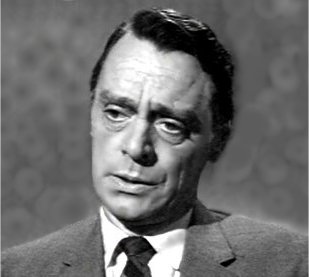
He was a well travelled television character actor with a long string of forgettable credits and an Alabama accent where he was an Episcopal preacher between takes. He had gone north to Columbia University where he caught the acting bug. He certainly could act and here he twitches with nervous energy and delivers his testimony with conviction. Yet I could not see him attracting an audience with his earnest admonitions. Neither did the network buyers.
John Agar by contrast had worked for John Ford in the Cavalry Trilogy with John Wayne and married Shirley Temple. He was definitely on the A list of celebrities.

But came the fall. Temple divorced him citing alcohol, and he proved her right by finding the bottom of many more bottles, and spending months in jail on drunk driving charges. He made a comeback of sorts in B movies, especially Sy Fy and creature features and then television. But the drunk driving recurred.
The comparison must be Star Trek in 1966 where the Earth is left behind for space in a clean break. In ‘Destination Space’ the crew are all Americans and all are in Airforce coverall uniforms with the exception of the scientists who wear suits and ties to space. The crew is entirely masculine, and no women appeared on the space station, thus depriving the script writer the opportunity for the stupid sexist remarks prevalent at the time.
Absent are any women. Absent are the futuristic fashions of Star Trek. Absent are the multi-national and poly-ethnic crew. Absent is a united Earth. Absent is the alien Mr Spock. Absent is much technology, clipboards and pencils are in use. Though no one seemed to smoke on the space station. Absent is a dynamic leader, for Townes plays the committee man to a T but that is all. Absent also is any humour; no Bones to bring things down to the ground, though there is by-play among the crew that lightens the load a little, though it sounds like something the writer heard others say, and is so stale in the re-telling.
Most of all, absent is any sense of adventure or wonder at space and the cosmos. By the way, Harry Townes appeared in ‘Star Trek: Original Series’ as Reger in ‘Return of the Archons’ where he announced the Red Hour! Strong stuff that.
The fashions may seem out of place in the list above but the fashions alerted one and all that ‘Star Trek’ had left our time and place. Ditto the technology of coloured lights, automatic doors, tri-corders, and the medical scanners. Taken together these two dimensions helps convey the distance, the break between 1965 and this world of the stars.
‘The Invisible Man Returns’ (1940)
The second in the Universal franchise after ‘The Invisible Man’ (1933). In the intervening years the magic of special effects improved and those that moved slowly and awkwardly in 1933 flow nicely in this one, e.g., the telephone in the air.
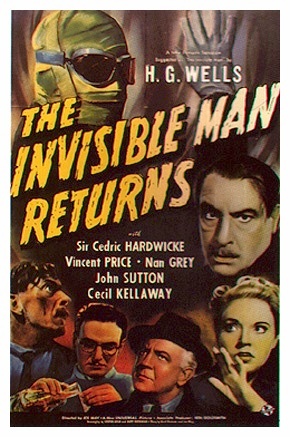
Pedants will note that the Invisible Man played by Claude Rains died at the end of eponymous film, and seven years later his cadaver must have been in no fit state to return. But Universal had paid H.G. Wells for the right make five films, though corporate memory failed until 1940, and a return on investment was to be had. Voilà! Put the scriptwriter to work. On that hack more below.
What we have then is a new invisible man. This one is the brother of the deceased Claude, who in death is portrayed as a nice guy. The scriptwriter evidently neither read Wells’s book nor saw the first movie. Claude became a right bastard from the get-go and the drugs that made him invisible only made him even worse. He was vindictive, small-minded, thin-skinned, vitriolic, inhuman, and cruel. Sound like any Twits-in-Chief? Readers and viewers were all glad when he snuffed it.
But history is written by the survivors in the first instance, before the revisionists make careers out of muddling things up. In retrospect Claude is portrayed as the victim of the drugs, ahem, which he himself developed specifically for the purpose of terrifying others. Some nice guy.
Anyway he is in misty hindsight much missed and it has been concluded, again by those unencumbered with knowledge of the novel or film, that his brother did him in, and this hapless brother has been tried and found guilty and is about to be hanged. Meanwhile the brother’s chaste fiancee frets and his stalwart friend, the doctor, tinkers in the lab. This doc has a nurse but no patients and so, like Batman, is always ready to hand.
While in the early going there are many references to brother Geoffrey, he remains unseen in the slammer.
Spoiler.
On a visit to the slammer Doc slips Jeff some invisibility juice and he does a bunk in the nude. An invisible man hunt ensures and some of it is brilliantly done, as when his ghostly outline appears in the rain or amid the cigar smoke of the detective in charge, who is avuncular and unhurried about the pursuit of a convicted murderer.
Of course Geoffrey was framed and the three try to uncover the real culprit who is before their very eyes and quite visible to us all because he is top billed. But now invisible Geoffrey develops a Trump-complex and starts to rant about world domination seemingly having forgotten his own situation. He blames Hillary for everything. Meaningful glances are exchanged by chaste fiancee and stalwart Doc.
With Jeff on the loose the careful façade of the real villain crumbles and justice wills out, as it does in cinema. There is a terrific fight scene at the colliery and Geoffrey is near death. However Doc finds treating his wounds is difficult since…. he is still invisible. But the blood he has lost is evident.
Invisible or not, Geoffrey needs blood so Doc does a transfusion. Whoa. How did he find the right spot. When I go the Red Cross that is not always easy. Sometimes impossible. Quibble. Quibble. Quibble. Anyway the transfusion works and the new blood brings Geoffrey back to the land of the visibles, and low and behold it is none other than Vincent Price! He appears only in the last scene.
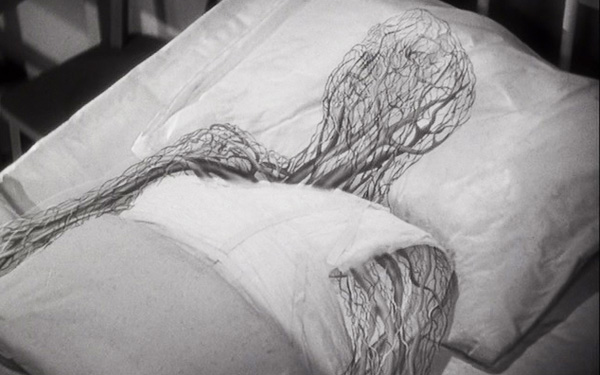 First to reappear at the arteries with the new blood, then the skeleton and then the man himself.
First to reappear at the arteries with the new blood, then the skeleton and then the man himself.
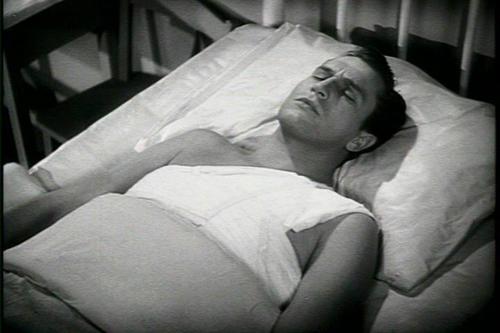
Earlier on the run Geoffrey dons the clothes of a scarecrow in an amusing scene that took hours to film, but seems effortless on the screen.
Like Claude Rains, Price was cast for his mellifluous voice and crisp diction, since the voice alone has to carry the leading role. His work is superlative from the resigned prisoner to the disturbed invisible to the lovesick man to the gloating would-be tyrant.
Surprising enough the effects were not special enough for an Academy Award. Beaten instead by the flying carpet in ‘The Thief of Bagdad’ (1940).
The director was Joe May, an expatriate German who fled the Vaterland in 1933, and who, despite his name, never learned a word of English and who is said to have had the dictatorial manner of his mentor Fritz Lang which earned him many enemies and ended his career. The scriptwriter who bridged the gap from the first film was the redoubtable Kurt Siodmak who gave us Wolfman and much else in Sy Fy and creature features.
‘Non-Stop New York’ (1937)
Just the facts: 1 hr 7 m and IMDB 6.9/200
Janne Wass includes it in his blog ‘Scifist, a history of science fiction movies in reviews,’ and so I had a look on You_Tube. Such is the Finn’s influence.
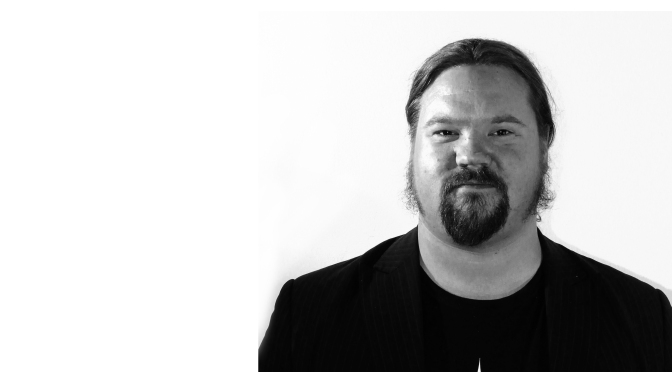 Janne Wass
Janne Wass
The film is a conventional krimi set in an airplane. The players are fine but the script is neither fish nor fowl, but more of a homophone of the latter. The villain is so flamboyant even the naive boy spots him long before the dense and dull copper does. The shyster blackmailer is too stupid to live. Sometimes it played for laughs, hearts and flowers at other times, and deadly drama, and back and forth.
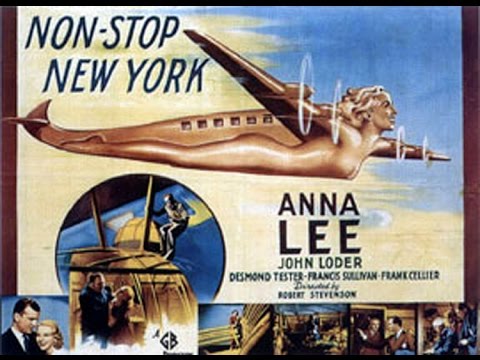
Another case of the lobby card bearing no relationship to anything in the movie.
As to its credentials as Sy Fy, it was made in the USA in 1937 but is set in the distant year of 1938. No, that will not make the cut. After much dithering in the first half, the second half all takes place on a giant airplane that flies from London to New York, non-stop! In eighteen hours! Non-stop! Gasp!
That seems to be it.
The size of the craft is enormous and the non-stop flight over the Atlantic, these get it on the SciFist list. In 1937 that would have been phenomenal because Trans-Atlantic flight was still for daredevils. Most flights were by flying boat aircraft taking off from the waters of western Ireland and landing in Newfoundland. The alternative route, again by flying boat, was to go south through Lisbon, the Azores, Bermuda, and so on. Straight across from London to New York City only came with jet engines in 1958 when the British Overseas Airways Corporation, as British Airways was then called, flew did it. The route was over the northern most North Atlantic to Gander in Newfoundland where the aircraft stopped for fuel, catering, and relief. I once laid up there for a few hours because of weather. I cannot find a time given for these trips in 1958 but they were not non-stop even twenty years after this film.
Today the British Airways web site gives 8 1/2 hours from London to New York City. It is 7 1/2 back to London thanks to the winds. Both of these flights are direct. Singapore to New York City is more than 18 1/2 hours these days. Imagine sitting next so some fool bellowing into a mobile phone for that flight.
Let’s call the aircraft Titan, a flying boat, too; inside it is even bigger than the Tardis. The staterooms put those of ocean liners portrayed on film at the time to shame. The windows are far bigger than those that brought the Constellations down. And, get this, there are open air balconies frequented by the passengers as it wings over the North Atlantic. The baggage hold is cavernous and largely devoid of bags. There is more than one dining room. There are multiple decks and if that is not enough room our hero has to climb outside over the top of the speeding aircraft to enter the cockpit, because its doors only open from the inside. While we can appreciate this limitation as a security measure, it begs the question of how the pilots get in.
Considering that context, ‘Non-Stop New York’ is certainly futuristic in its background, but….. [quibble alert] still not Sy Fy. That futurism contributes nothing to the plot which is an unsolved crime, a missing witness, young police officer meets young woman, etc. It just so happens that the resolution is on the Titan. It could as well have been on a ship, in mountain hotel, on a lake. The futuristic element is incidental background. Harrumph. No outer space, no science of any kind, no aliens, no superwomen, none of the usual Sy Fy suspects.
The heroine, Anna Lee, is feisty, independent minded, and smart. She knows what to do and does it.
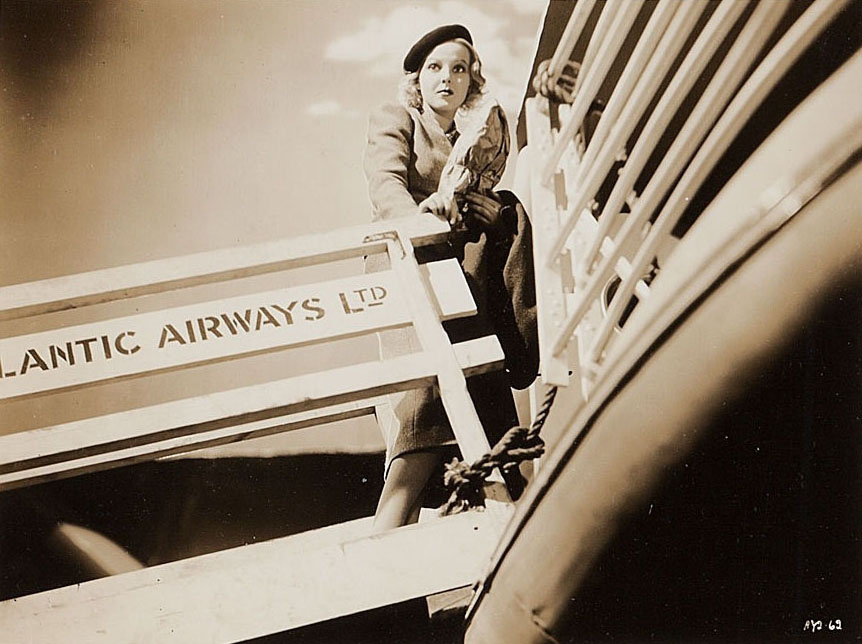 The stowaway strides up the gangway to board the airship.
The stowaway strides up the gangway to board the airship.
There were a few such celluloid female role models in the 1930s but they evaporated from the screen by the homogenous 1950s. Lee had top billing on the poster and cards of the time and carries the picture.
The story is confused and confusing and tries to slip a ninety-minute feature into an hour. It starts in New York City, then the heroine travels by boat home to England, then back to New York City as a stowaway in the aforementioned Titan. It ends somewhere over Newfoundland. All this to’ing and fro’ing reveals all too clearly the mini-budget. The New York City sets look just like the London ones and vice versa. The whole dynamic rests on the idea that in those pre-NRA days a gangland slaying in New York City is world news, and there are many spinning newspaper headlines from around the world. Some in foreign languages. Wow!
There are some good laughs and some good lines but they do not zing in the spongy morass.
By the way it is derived from a novel by Australian Ken Attiwill and one of the players later emigrated to Australia, namely Desmond Tester, who is the youthful comic relief in this tale. Tester made a career in children’s television in Australia during the 1950s and 1960s and those of certain age remember that name. He also did some Strine television drama in the 1970s. In contrast Attiwill was born in Adelaide and migrated to England. Three of his novels were filmed. As with me, there is no entry for him in either the ‘Australian Dictionary of Biography’ or ‘Wikipedia,’ but traces in the former suggest he was a journalist who married an English woman in Adelaide and went to England with her.
The saxophone playing boy Demond Tester is in the charge of his Aunt Veronica and she seemed so familiar to me, but from where? And then it came to me, as things less and less often do, from the mind palace: she was a biologist in ‘The Man-Eater of Surrey Green’ (1965) from ‘The Avengers,’ one Athene Seyler.
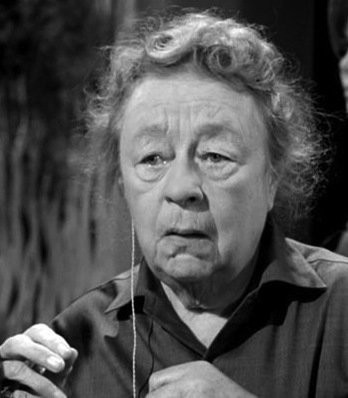 Athene Seyler in the 1950s.
Athene Seyler in the 1950s.
She had earlier been in ‘Build a Better Mousetrap’ (1964) where she showed the local biker gang a thing-or-two. Curmudgeonly and quirky with a lived-in face even in 1937, she was in much demand in films of the 1940s and 1950s.
‘The Four-Sided Triangle’ (1953)
Those quaint English villages always scare me. First there was ‘Village of Damned’ (1960) and if that was not bad enough along came ‘Midsomer Murders’ (1997+). Thus alerted, when this title opened on a picturesque English countryside I feared the worst. and I was not disappointed.

Two pals do science, a lot of it. There is a tedious backstory first, but the chase is this. They invent a replicator that 3-D prints anything from energy not raw materials. They refer to making works of great art available by reproducing them and supplying rare drugs to hospitals. So far, so altruistic.
Then their prepubescent friend Lena reappears and, gulp, there has been much puberty. Scientist Robin marries Lena, leaving scientist Bill, who is a dopplegänger for Liam Neeson out in the cold, old shed where they have perfected the 3-D replicator.
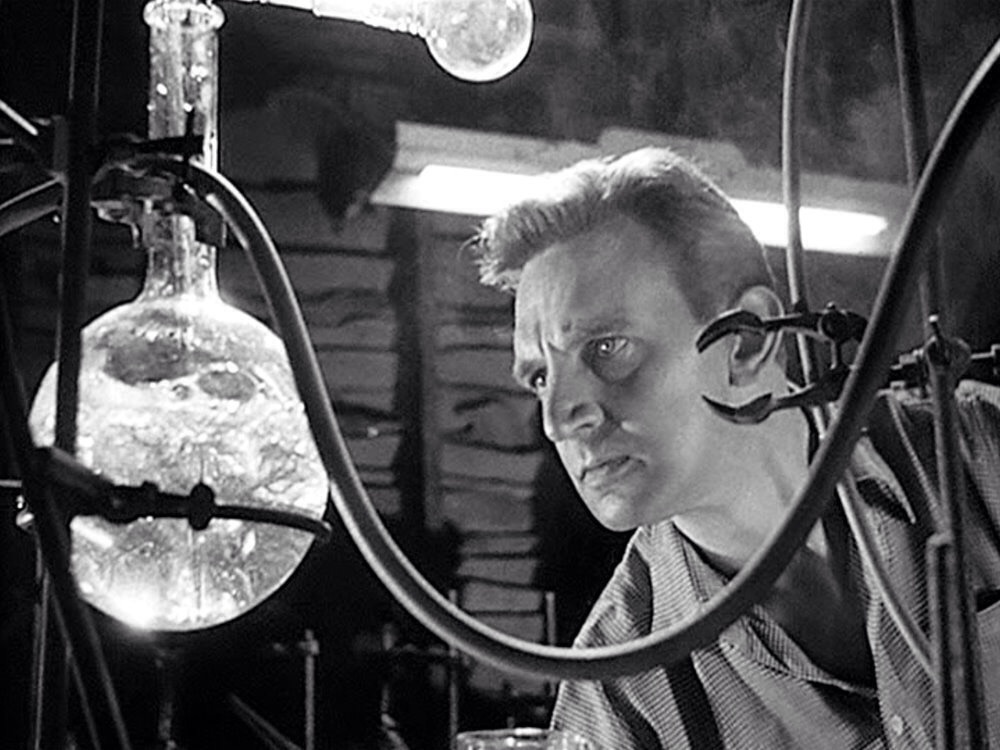 Stephen Murray as Liam Neeson.
Stephen Murray as Liam Neeson.
Robin goes off to London to square the deal with Whitehall, while Bill mopes. A lot. Mopes some more.
Then, no doubt while thumbing though a copy of Mary Shelly’s most famous book, sets to work on improving the replicator to replicate…..Lena! Yep. It is quite a step from replicating a blank cheque to replicating a person but Bill does it. Much bubbling of liquids, flashing of lights, throbbing of boxes, muttering of incantations in the shed and the rabbits multiply. Next up Lena.
He talks her into it. He talks fast because this a short film. She agrees though why is by no means clear. Hey presto! Now we have the original Lena and the duplicate, Helen.
She is such a perfect duplicate this Helen that she, too, loves Robin, though he still in London. What is he doing there anyway when he has Barbara Payton back in the shed, chorused the fraternity brothers? Strange.
Bill has Helen but he does not have Helen. What to do? Ah ha! He will fine tune her in the shed. Not with roses and sweet words but with the mad scientist’s old friend, electricity! He will adjust the clone to erase her memories of Robin and start fresh with her. Lena, having come this far, agrees to assist so on a dark stormy night the three of them gather in the shed and strap Helen into the dental chair and set to work.
Kaboom! Too much juice and the contraption blows up like a Samsung Galaxy: Bill and one of the women perish in the fire. But which one? A nail biter that.
There is also the implication that the details of the replicator have also been lost in the fire and we will have to wait until the Twenty-First Century for 3-D printing. No more duplicate rabbits or Helens in the meantime.
Gosh, where to start. The ideal of reproducing at will objects from energy is to be found in much Sy Fy like Star Trek. But here no consideration at all is given to the consequences of doing so, though maybe that is why Robin got stuck in London. Some pedant there wanted to think about it. If gold is replicated in masses then its value will fall. If rare works of art become commonplace, they are no longer the rarities they were. If rare drugs proliferate like penicillin maybe diseases will mutate faster.
Still less is any thought given in the screenplay to the moral consequences of replicating a sex toy. Bill just assumes Helen will love him. He just assumes he will love her and not pine for the real thing. He just assumes no one will notice or question the uncanny resemblance of the two women.
Barbara Paton plays both Lena and Helen and she is indeed eye candy in the garish manner of the time. Never do we see any interaction between Lena and Helen, though each is aware of the other. That would have been too expensive to film for a quota quickie.
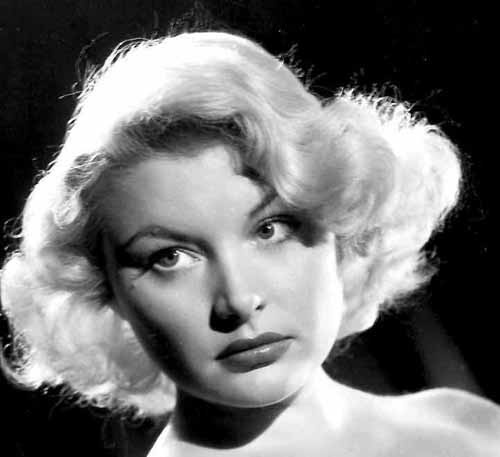 Payton at the time.
Payton at the time.
Payton was dead a few years later. The sex, drugs, and alcohol of Hollywood drove her to an early grave. She went to England to film this, it is implied in the Wikipedia entry, to escape these bad habits, but a few weeks in a facsimile English village and she could not wait to get back to Sin City. Once back there she reverted to her old ways.
Together with the robotic ‘The Perfect Woman’ (1949) and the retiring ‘Invisible Woman’ (1940) we certainly get the manners and mores of the times for women in Sy Fy. However in both these titles the women more than hold there own, not so here where Payton is little more than a Barbie doll.
It rates on IMDB 5.9 from 425.
‘It Conquered the World’ (1956)
This early Roger Corman effort comes in at 4.8 over 1,618 votes on the IMDB. It runs 1 hour and 11 minutes.
What is the set-up? Buddies Peter Graves and Lee van Clef are doing science of some sort off camera in the desert southwest where most Sy Fy science seems to be done. Each has a wife with whom to play house. While the impossibly handsome Graves is very playful, van Clef with those beady eyes even at this early stage in his career has discovered the pleasure of (H)am_ateur Radio and talks to the stars, well no not his wife played by the redoubtable Beverly Garland who outlasted the man from Davanna in ‘Not of this Earth’ (1957), but to Zontar of Venus. Okay, so it is a planet and not a star for the pedants.
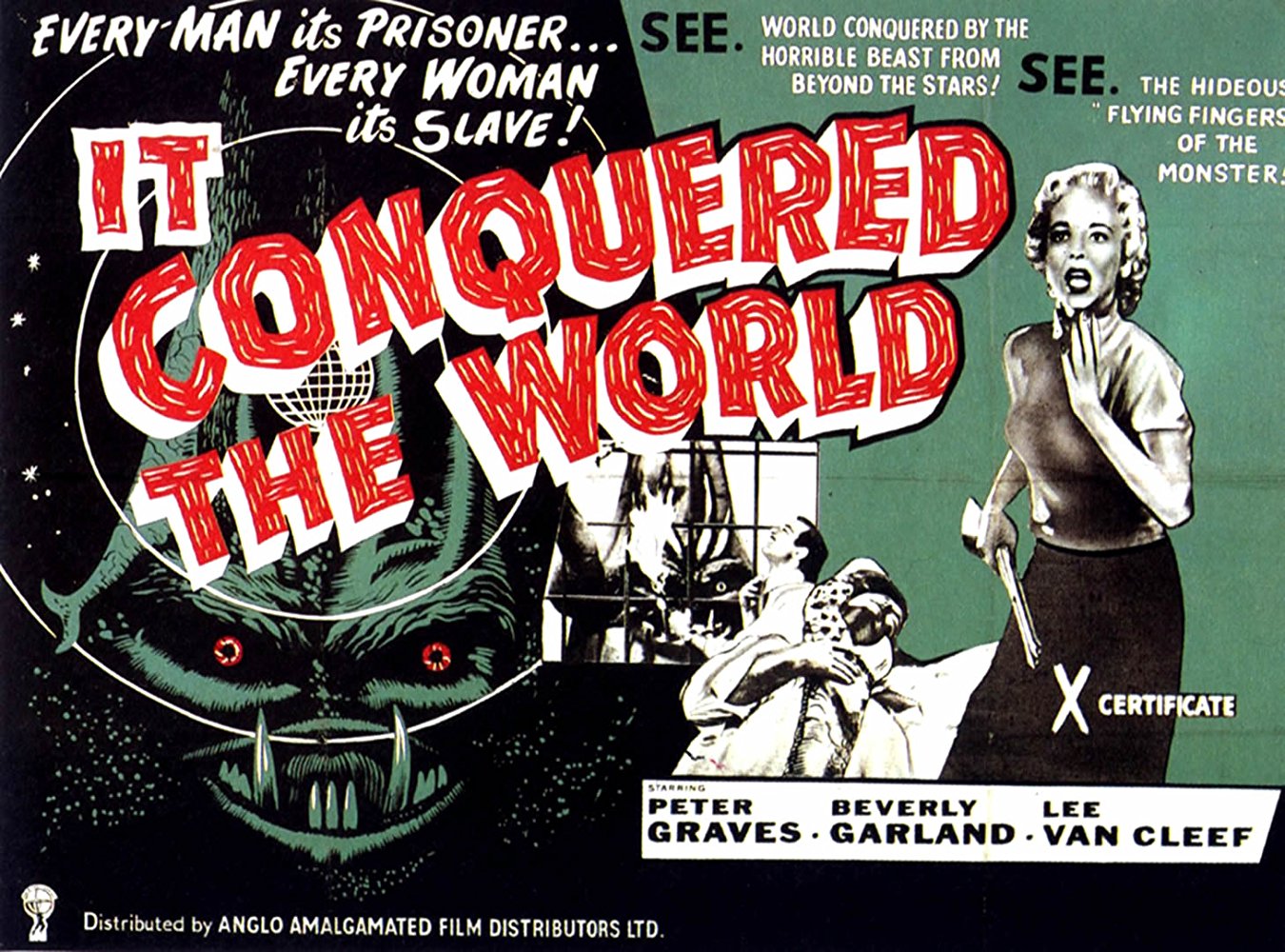
Zontar plays an old sweet song. He, well maybe Zontar is a she, gendering slime ball aliens is not in my pay grade, but Lee calls him a ‘he,’ Zontar, has travelled to Earth in Qantas economy class and is recovering strength from the rocket-lag of the trip in nearby cave motel. Been there.
Zontar promises Lee a heaven on earth for all humanity if only he is allowed to take over their souls. Seems a fair deal to Lee. After all Lola wanted a soul for a ball game, admittedly the stakes were higher there with the World Series. (Ray Walston had to go to Mars to escape Lola, but that is another story.) Zontar wants all souls, not just infielders.
In return for this Red Faustian bargain the reign of Zontar promises the peace and prosperity of slavery. No more wars. No more conflict. No more fights. No more pollution by green voters. No more tweets by twits. Please, no more ‘Top Gear’ I asked. Is this world communism, or what!?
Lee has no sales resistance and has bought the pitch and will do anything for Zontar in his blind alien-crush. He is the idealistic, weak-willed intellectual sort who would sell us out to the Enemies of Freedom so conspicuous in movies of the era. He is an enthusiastic fellow traveller. Amen. Meanwhile Zontar is mind-napping some local military types who are pushovers and Big Z wants Peter Graves, not for his chiseled chin, but because his scientific knowledge will help with the enslavement. It is a big world for one Zontar to conquer single-handedly but he is an ambitious red alien.
While Lee runs up the astral roaming phone bill talking to Zontar, his wife listens. She puts up with a lot as 1950s wives were supposed to do. She does protest when Lee kills some people at Zontar’s direction but relents when he gets all sweetness and light. Briefly. On it goes, back and forth. Zontar has brought a few trained bats in his checked baggage from Venus to transmit his mind control venom, but Graves fights them off. I left the room.
Graves’s wife however gets a hickey and becomes one of Them, a Zontar zombiette! Evidently there is no way back, and Graves with barely a moment’s hesitation shoots her dead with his handy NRA piece. Whoa! That was a surprise to this jaded viewer. Was that within the informal production code of the time? Shouldn’t he have socked her and tied her up for a later cure? On the other hand, there is no salvation for those who go Red. Better off dead.
Meanwhile, Zontar is running out of bats and orders Lee, who by now is so batty no bat is needed to infect him, to whack his old college roommate and buddy Peter. Lee pauses, briefly, before reaching for his rifle. All this NRA product placement has got to be seen to be appreciated. This is the last straw for Bevs, a registered Democrat, and she sets off to top Zontar herself with the last line, ‘I’ll see you in hell!’ (In that pithy phrase she sums up my reaction to ‘Top Gear.’)
Zontar looks like a tall condom with tentacles. No one would notice him at Frat party.
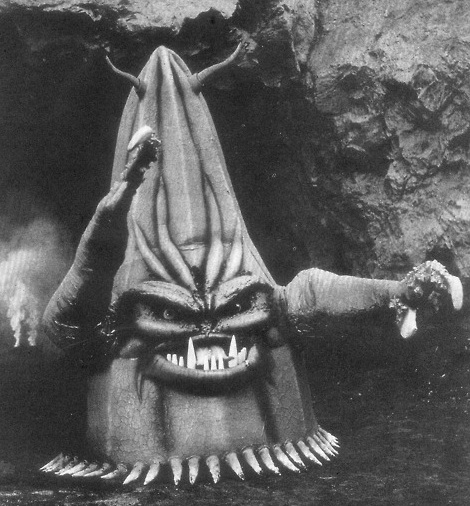 See.
See.
This is one of many such creature features with Peter Graves, who was just too handsome to be a movie star. No one could take him seriously as an actor.
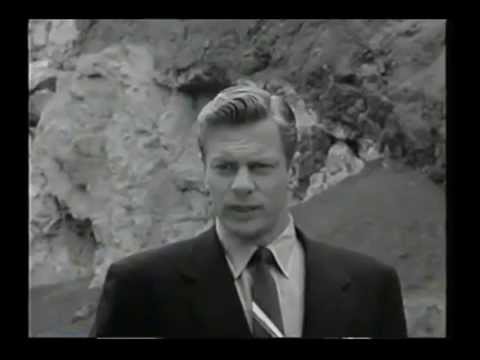
The masculine version of the Dumb Blonde, there for his looks. (I know the feeling.)
‘Zontar: The Thing from Venus’ (1966) remains to be seen. Keep watching this space for a report.
‘Project Moonbase’ or ‘Project Moon Base’ (1953)
1 hr 3 m @ 2.8/10.0 from 813 with nothing better to do on the IMDB.
He says ‘Project Moonbase’ and she says ‘Project Moon Base.’ Will they call the whole thing off? Nope. See below.
Never a good omen when the publicity department does not know the name of the film. The opening title on the film is ‘Project Moon Base’ but the lobby cards more often than not have it as ‘Project Moonbase.’
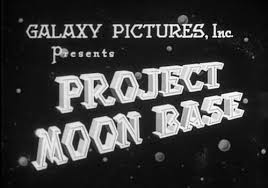 Two words
Two words
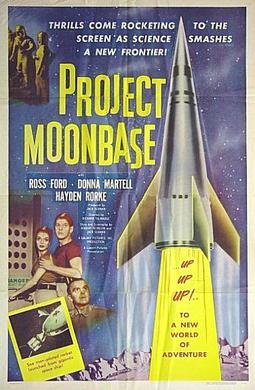 One word.
One word.
Schizophrenia goes deeper than the title and for that read on.
Many Sy Fy films of this era use aliens, consciously or unconsciously, as surrogates for communists with dark powers, malevolent purposes, and slavering tyranny. Whoops, starting to sound like the Twit-in-Chief. Sometimes that analogy is vague and in rare cases even absent.
Here it is front, centre, and explicit from the start in Robert Heinlein’s screenplay. The Enemies of Freedom (aka Commies) are no longer under the beds but under the launch pads of Yankee-doodle rockets. They have been there before in ‘Destination Moon’ (1951).
The Russkie spies in this yarn are dumb enough to sleep under the launch pads. They have an elaborate organisation that is run like General Motors with flunkies doing whatever it is that flunkies do and exact doubles for everyone in the space program so when a scientist is called into the Moonbase project, the Russkie tsar consults the space age 3″ x 5″ inch card file for the dopplegänger. Stupid, yes, but organised.
They off the scientist and insert their sleeper agent, who probably was — asleep — during agent training given how inept he proves to be at agenting. Not only does he know nothing about science, that could be overlooked, but more importantly he knows nothing about baseball and that is a dead giveaway. Although the crew is less than adept, too.
Paranoia is always a strand of Heinlein stories and it is the major theme here in this one. Another strand is that civilians are all stupid clots, and it is applied here with a sledge hammer key of the typewriter. Only men in uniform know what is what, though they seldom seem to know why is why. But as to the uniforms…well, seeing is believing.
There is a space race and the USA has a space station wheel from which will be launched the first mission to the moon to set up a Moon base as a peace-loving hydrogen bomb missile platform. Yep, it is that explicit. The general does say we had to include some science babble to get the funding, but it is will be ignored. Got it. That is democracy at work, lie and cheat.
The general then tells the putative leader of the mission to the Moon to stand down, because by presidential order the mission commander will be Colonel Bright Eyes. (Well that is what it sounded like to me.) Gasp! Those civilian fools in Washington interfering again in macho military business. This latter theme is another old faithful in Heinlein’s cosmology.
The general and the major agree that Bright Eyes is one giant pain in the rear echelon. Cue Bright Eyes to enter.
Whoa. Colonel Briteis is a woman. Gasp!
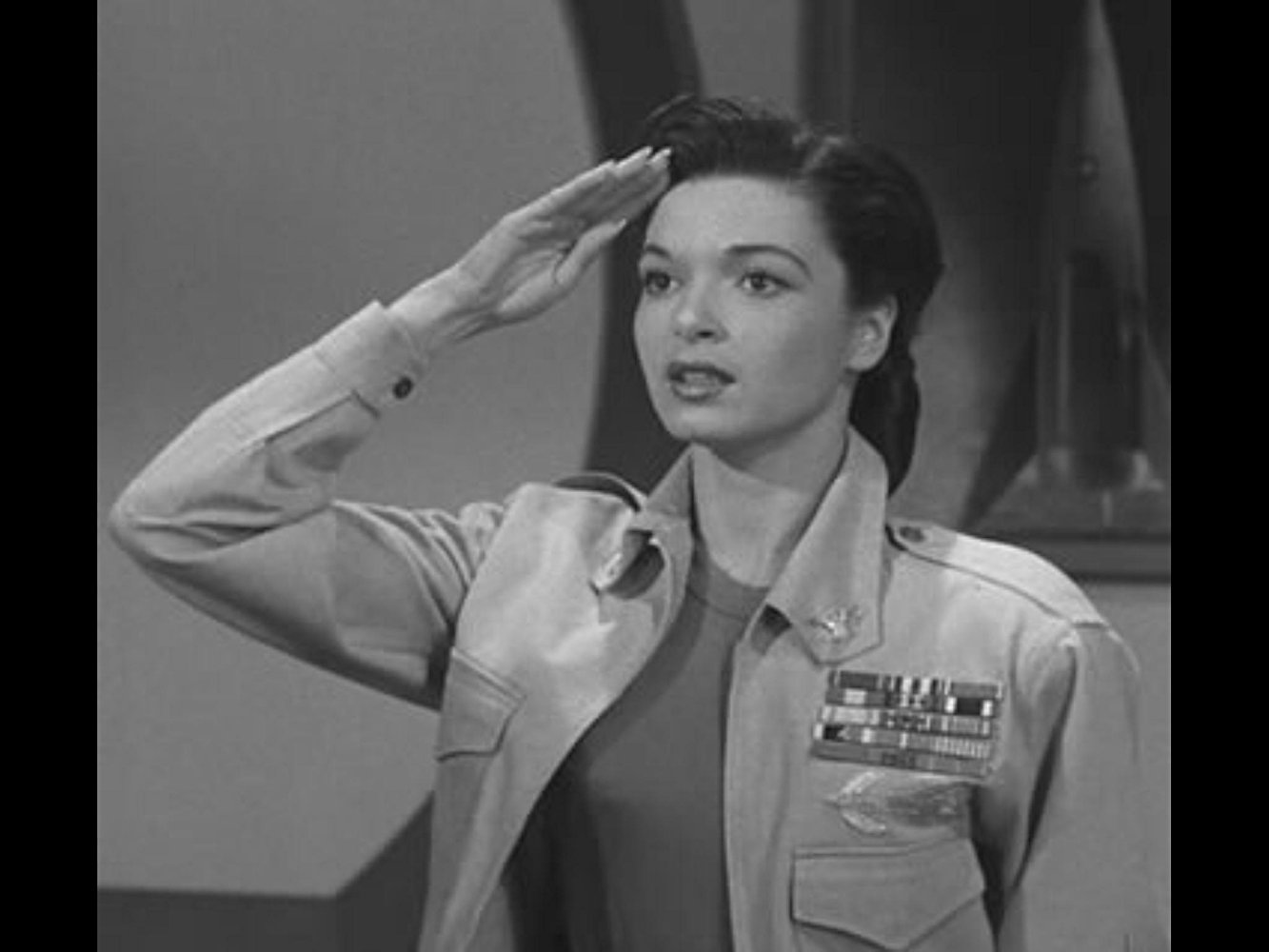 She leaves her shirt unbuttoned so as….
She leaves her shirt unbuttoned so as….
She gets to go because it is good publicity and she is half the weight of a man. Huh. Much was made in the opening that on the Space Station weight did not matter but now it does. Hulking Major Dimwit goes along as co-pilot to save the bacon later.
To make sure Colonel Bright Eyes knows her place, the General threatens to spank her. Yep, that is the military. Coercion and brutality are the order of the day. Later the major in a stirring display of military discipline tells the commanding Colonel to powder her nose. Later the general on the space radio sends Colonel Bright Eyes away for a private chat with Dimwit, thus abrogating the chain of command.
Meanwhile, the Russkies have planted that double as the civilian scientist. See, the civies can never be trusted. He sets about gumming up the works in the most obvious fashion possible, but Major Dimwit lives up to the sobriquet. Colonel Bright Eyes and Dimwit spar. (We all know how that will end.)
There is a rocket called Canada and another Mexico, but rest assured both bear USAF markings. They serve no purpose in the film but pad it out. There is a lot of padding to get a 25 minute film up to the 63-minutes that this is. Everyone walks very slowly. Slower. Slowest. The countdowns to launch are in real time. Zzzzzzz.
The scientist spy is Doctor Wernher whose name is spelled out three time for the dolts in the audience. Get it? Wernher von B….
The story published in 1948 gets some things right. A space station by 1970. Check. Well in 1971 Salyut 1. Oops, a Russkie. A lunar orbit for Discovery. Check. Apollo V in 1968. And that a special lunar landing craft would make the descent. Check. Apollo XI in 1969.
The stress of takeoff is well presented. The fight during takeoff with heavy gravity is an interesting idea, a slow motion struggle against the G-force and each other. The moonwalk is up to Michael Jackson standard. The wall walking and upside down meeting in the space station are contrived for effect and add nothing to the story or ambience. Moreover the general who was left on Earth pops up there in a tee shirt and beanie. It is easy to see why this general was demoted to a colonel on ‘I Dream of Jeannie.’
The Russkie agent is a klutz but Dimwit is just as bad when he rats out the Russkie to Colonel Bright Eyes well within earshot of the klutz. Loose lips. They then fight as above.
The sets are silly, the dialogue insipid, the acting robotic, the sexism suffocating, and the like. Then there are the Peter Pan hats and short-shorts as space wear, perhaps to reduce weight.
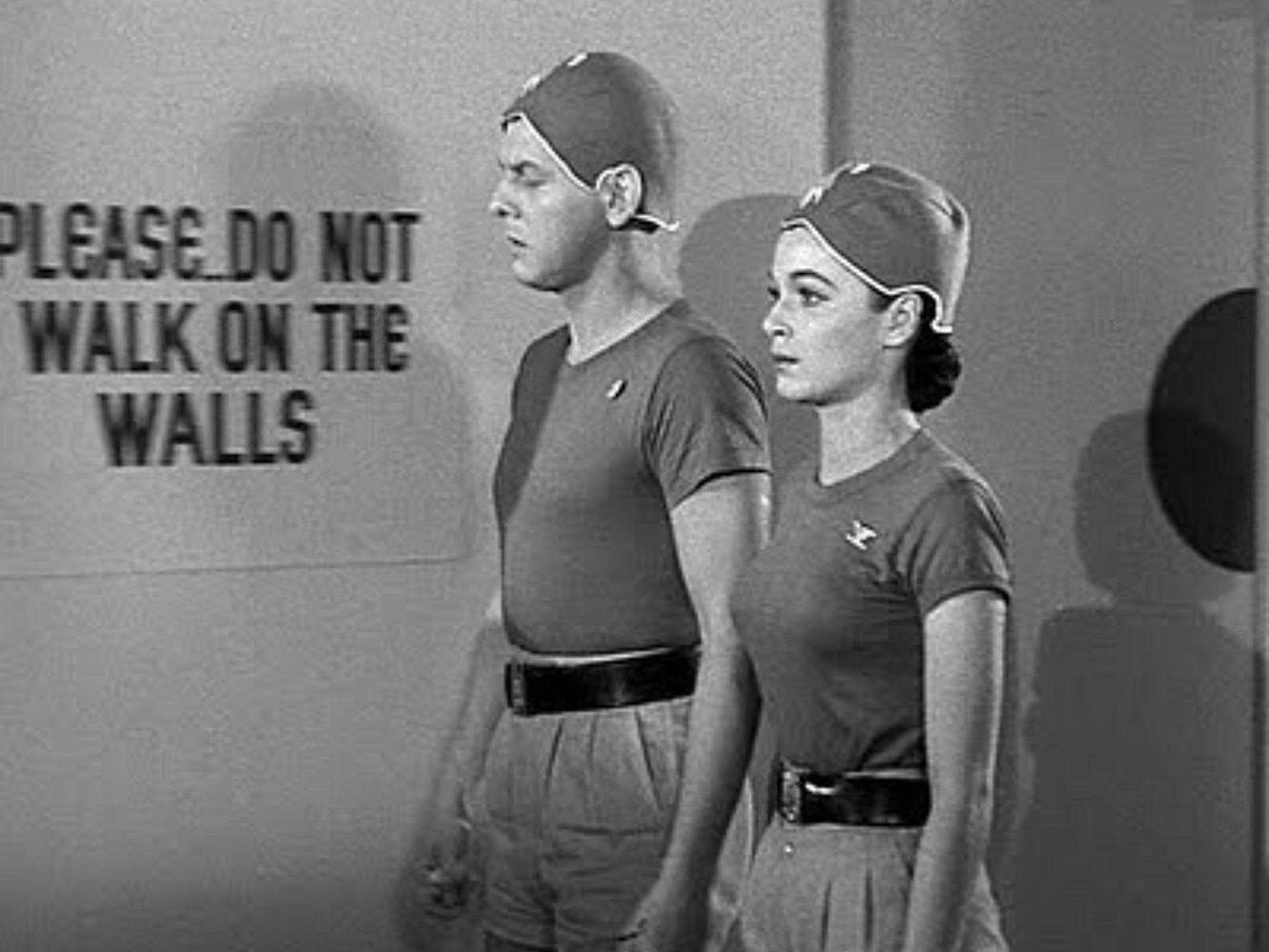
On weight, the general says no one sent up weighs more than 150 pounds yet earlier he said Dimwit weighed 180 pounds. See what can be learned by listening.
Silly, well consider this. Once they are stuck on the Moon high command calls it Moon Base (Moonbase) One. But with a young man and young woman in a tin can on the moon for weeks or more while a relief force is sent, it would look better in public opinion if they were married! Dimwit is reluctant. See, a dimwit. But Colonel Bright Eyes can hardly wait! She literally jumps at the chance! What all women want, even on the moon is to be married to a hulking hunk. Without courtship and in low gravity they get married. Think about that low gravity, because the fraternity brothers did.
It is worth watching to the very end. Because after they are married up there on Moon Base One the President of the United States appears on the space videophone, and it HILLARY CLINTON. Yes, a woman in the White Hosue by 1970 according to Heinlein.
And Major Dimwit is promoted to general to outrank his colonel wife. The end.
The deeper schizophrenia of the film per ‘SciFist’ is this. The production was commissioned for a ten-part television series with the budget and cast for that. Heinlein’s story and screen play were adapted for that purpose. In pre-production (preparing wardrobe, renting space and equipment, gathering cardboard props, hiring extras, and so on) the studio changed it to a B feature film. Why? Because the success of other Sy Fy films offered an opportunity to ride the coattails of those successes. By this time Heinlein was paid off and gone. The director agreed to add to the script with the result we see. The budget did not change nor the casting. Walking slowly was one way to pad it out to feature length.
The essential difference is that in the original the first episode would be an exploratory orbit of the moon, and in subsequent episodes there would be a landing. In the film the lunar lander crash lands because of the fight with the enemy of freedom agent.
Strangely, along with ‘Destination Moon’ (1950) this was the last movie form Heinlein’s work until ‘Starship Trooper’ (1997). Odd that.
In mentioning props above, I should have noted that the space suits used are the very well used ones first made for ‘Destination Moon’ (1951) but here they have different helmets. They also figured in ‘Flight to Mars’ (1951).
‘Earth vs the Flying Saucers” (1956)
One of the high water marks for 1950s Sy Fy, subspecies flying saucers, phylum alien invasion.
Hugh Marlowe carries the movie in nearly every scene. He was a sceptic about aliens in ‘The Day the Earth Stood Still’ (1951) but he is persuaded, slowly, in this 83 minute excursion. He is ably supported by Joan Taylor and Sy Fy stalwart Morris Ankrum. The special effects were quite special in the day and remain compelling.
Marlowe is the lead scientist and the decision maker in Project Skyhook located in the desert southwest. Where else? While driving along with his newly married wife he dictates the latest report on the project which involves launching a dozen satellites to scan the heavens. Then…..
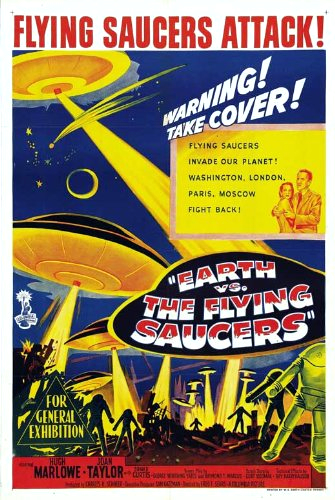
A weather balloon appears behind their car and buzzes it. Zounds! Some weather balloon! Yes, Erich, it is a flying saucer for what other explanation could there be given the title above.
Hugh, remembering his journalistic skepticism earlier, will only admit to Joan that they have seen something that looked like a, ahem, a…flying saucer. This scientist is not leaping to tweet the sighting but sitting on scholastic dignity. Joan is incredulous because she knows very well what she and they saw. In all it is a nicely done in-joke about those who doubt their own eyes.
It is also the pivot of the plot, but that emerges only later in a spoiler below.
They report the sighting to Morris at Skyhook who is skeptical but indulgent.
It turns out the Skyhook satellites disappear as soon as launched. Is there a connection between the what-appeared-to-be-a-flying-saucer and these disappearances. Hmmm. Then one of the saucers lands at Skyhook and the doubts and many of the doubters vanish in a cloud of atoms.
Two tin men emerge from the saucer and Morris immediately opens fire on them with an anti-aircraft gun he keeps nearby, killing two of them. This greeting is reciprocated with a disappearing ray that disappears a good number of grunts. The saucer then destroys the whole facility for good measure. Thanks to the script Hugh and Joan survive and lead the response.
Response? Well there is no denying that the Skyhook base has been levelled and hundreds killed, leaving no eyewitness left alive. While the taxpayers money was being burned, Hugh and Joan were sequestered in an underground bunker canoodling and only glimpsed part of the destruction on closed circuit television. There were no tapes. Just their assertions.
The batteries on the tape recorder Hugh was dictating into during the drive get low and that slows the playback of the recording reel where they hear a strange voice proposing to meet at Skyhook tomorrow! Next time, High, check the voice mail sooner! Had he done so earlier the destruction could have been avoided. No wonder his reception in D.C. is frosty. The project he managed is gone. His Key Performance Indicators are zero. Minus even.
The Pentagon panel to which they report is stacked with faces from 1950s television and they are no push overs for wild assertions about flying saucers because they have heard it all before on ‘Perry Mason.’ They listen to the odd message but doubt its relevance, authenticity, and its Euro Vision potential. Still they do know something is up. Just look. Flying saucers are crowding the airspace. O’Hare is even more chaotic than usual.
Hugh calls the aliens on the interplanetary radio he happens to have in his D.C. hotel room and makes another date.
Get this and get is straight! The alien asylum seekers called Hugh and made an appointment. They showed up at the right time, at the right place to be blasted by a 75 millimetres cannon. Bam! Bam! Two dead. Not a good start. The American Earthlings were the aggressors! Gulp. There goes the moral high ground.
Since blasting Skyhook in retaliation to the massacre of their two defenceless asylum seekers, the aliens have been busy. They apprehended Morris and have scanned his brain for intel. (Too bad they didn’t get Pat Robertson. Please!)
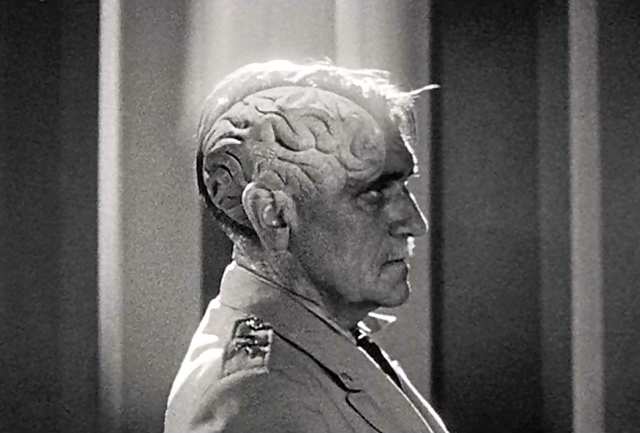
They now know enough to compete on ‘Eggheads.’ Many viewers long suspected Morris knew a lot more than he was saying.
It turns out the aliens’ plan all along was to conquer Earth! Ah, the moral high ground is restored. What appeared to be an aggressive and gratuitous assault on the alien landing party was a preemptive strike. Maybe the moral ground is more a hillock.
The aliens tell Hugh they had hoped to negotiate an accommodation, having done that elsewhere. Well there are always those parts of the Earth not fit for human habitation, e.g., the Gobi Desert, New Jersey, Mormonland, Trumpville, and the WestConnex wastelands of Australia. But no, we human do not compromise with asylum seekers.
While the military’s weapons bounce off them the saucers, like evidence off an anti-vaxxer, they wreak havoc with special effects on D.C.
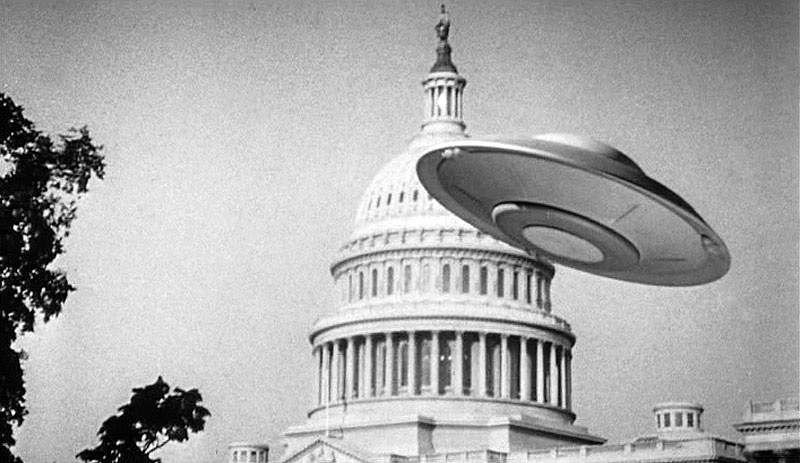
The saucers destroy the Trump Hotel (the Old Post Office) to cheers from a nearby sofa. Meanwhile super nerd Hugh has come up with a film producer’s dream weapon, wired together from junk, firing an invisible ray, and inaudible sound wave that drives the flying saucers away! And it cost next to nothing to assemble or use. It is one step up from pointing am index finger and say ‘Pow!’
Whew!
There are many visuals of flying saucers, a lot in a prologue that to my mind spoils some of the drama to come. The destruction of scale models of Washington D.C, is well done. Loved seeing the Washington Monument fall on a gathering of Tea Party acolytes denying flying saucer change.
The saucers leave but will they return? Will there be a sequel? We are still waiting on that one.
Made at the height of the Cold War there is no doubt that the aliens are surrogate commies with a nefarious plot. When things go wrong, it is the commies’ doing, even if it is not apparent. And they will stop at nothing, including brainwashing scans. Moreover, when they talk at Yalta their plans are already laid for conquest. Get it?
The United States is leader of the world and has to go it alone. There are only perfunctory references to the rest of the world.
While the military is ready with atomic bombs it does not seem a good idea to use one on D.C., though today some might differ.
Hugh had some extra-planetary experience earlier in ‘Worlds without End’ (1956) and he puts it to good use in this movie. Later he played Rush Limbaugh in ‘Seven Days in May’ (1964).
Ray Harryhausen did the special effects from a story by Kurt (sometimes Curt) Siodmak. The incidents and the visuals became touchstones in the subsequent Sy Fy films like ‘Mars Attack!’ (1996). The direction is crisp and the pseudo-science is mucho pseudo
The asylum seeking aliens are enigmatic in their wardrobe and even more so when uncovered.
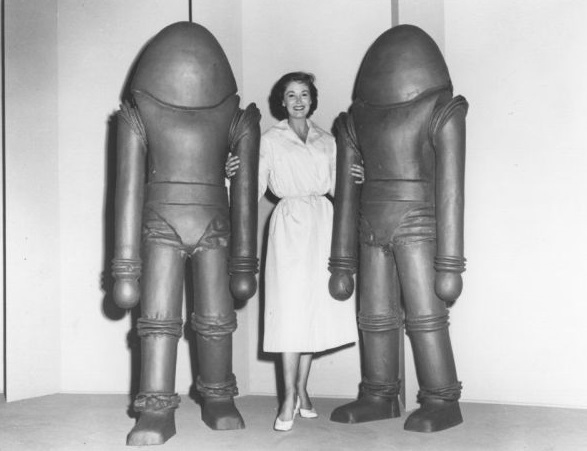
I saw it on the widescreen in Lexington Kentucky with cousin Don in 1957, and it stayed with me.
